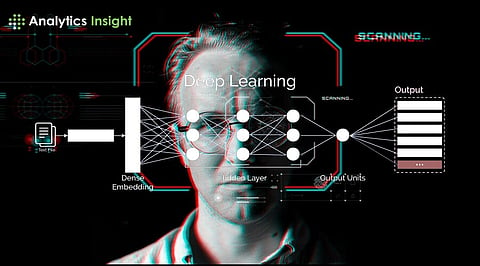

Biometric recognition, the science of identifying individuals based on unique physical or behavioral characteristics, has witnessed a remarkable transformation with the integration of deep neural networks. As artificial intelligence continues to advance, deep learning techniques have become a cornerstone in enhancing the accuracy, security, and efficiency of biometric systems. In this article, we explore the convergence of biometric recognition and deep neural networks, unraveling the potential and challenges within this innovative realm.
Biometric recognition leverages distinctive attributes such as fingerprints, facial features, iris patterns, voice, and even gait to establish the identity of an individual. Traditionally, these systems relied on classical machine learning algorithms, but the advent of deep neural networks has ushered in a new era of accuracy and reliability.
Deep neural networks, a subset of machine learning inspired by the human brain's neural structure, have proven to be exceptionally adept at handling complex patterns and large datasets. In biometric recognition, deep learning models, particularly convolutional neural networks (CNNs) and recurrent neural networks (RNNs), have emerged as frontrunners due to their ability to learn intricate features and patterns inherent in biometric data.
One of the most notable applications of deep neural networks in biometrics is facial recognition. Deep learning models, such as deep CNNs, can effectively extract hierarchical features from facial images, enabling accurate identification even in varying lighting conditions or with subtle facial expressions. This technology finds widespread use in security systems, access control, and mobile devices.
Deep neural networks have significantly improved fingerprint recognition systems. Traditional minutiae-based methods have given way to deep learning models that can analyze the entire fingerprint structure, capturing richer information for more reliable identification. This shift enhances accuracy while mitigating challenges like partial fingerprint scans or distortions.
Iris recognition, a highly secure biometric modality, has also benefited from the prowess of deep neural networks. By leveraging deep learning architectures, iris recognition systems can handle variations in illumination, pupil dilation, and occlusions, ensuring robust performance across diverse scenarios.
Deep neural networks have revolutionized voice recognition by enabling the extraction of intricate features from speech signals. Recurrent neural networks, in particular, are well-suited for sequence data, making them effective in processing the temporal aspects of voice patterns. Voice recognition is now a staple in personal devices, virtual assistants, and security systems.
Even the unique way individuals walk, known as gait, can be used for biometric recognition. Deep learning models, especially recurrent neural networks, excel in capturing temporal dependencies in gait patterns. Gait recognition systems are finding applications in surveillance, healthcare, and access control.
Feature Learning: Deep neural networks build hierarchical representations from raw data without the need for explicit feature engineering.
Robustness: Deep learning models are inherently robust to variations and distortions in biometric data, ensuring reliable performance across diverse conditions.
Adaptability: Deep neural networks can adapt to changing conditions and evolving datasets, making them well-suited for dynamic environments.
Interoperability: Deep learning models can be trained on multi-modal datasets, allowing for the fusion of various biometric modalities to enhance recognition accuracy.
Scalability: As computational resources continue to improve, deep learning models can scale efficiently to handle vast amounts of biometric data.
While the integration of deep neural networks has revolutionized biometric recognition, several challenges and ethical considerations persist:
Data Privacy: Biometric data is sensitive, and the storage and processing of such information raise privacy concerns. Robust security measures must be in place to safeguard biometric databases.
Adversarial Attacks: Deep learning models are susceptible to adversarial attacks, where subtle modifications to input data can lead to misclassification. Researchers are actively working on developing robust models to counter such threats.
Bias and Fairness: Biometric systems may exhibit bias, leading to disparities in recognition accuracy across different demographic groups. Ensuring fairness and unbiased performance is a crucial aspect of deploying biometric recognition technologies.
Regulatory Compliance: The deployment of biometric systems must adhere to stringent regulatory frameworks to protect individual rights and privacy. Compliance with legislation like GDPR is vital.
As technology continues to advance, the future of biometric recognition with deep neural networks holds immense promise. Integrating artificial intelligence with biometrics not only enhances security and identification accuracy but also opens doors to innovative applications in healthcare, finance, and smart cities.
Advancements in explainable AI and federated learning will address transparency concerns and enable collaborative learning without compromising individual privacy. Additionally, ongoing research in neuro-inspired computing may lead to even more sophisticated models, further bridging the gap between artificial and biological intelligence.
The marriage of biometric recognition and deep neural networks represents a watershed moment in the evolution of identity verification systems. From facial and fingerprint recognition to voice and gait analysis, deep learning models are reshaping the landscape of biometrics. As the technology continues to advance, addressing challenges and ethical considerations will be paramount to ensure the responsible and inclusive deployment of biometric recognition systems in our interconnected world.
Join our WhatsApp Channel to get the latest news, exclusives and videos on WhatsApp
_____________
Disclaimer: Analytics Insight does not provide financial advice or guidance. Also note that the cryptocurrencies mentioned/listed on the website could potentially be scams, i.e. designed to induce you to invest financial resources that may be lost forever and not be recoverable once investments are made. You are responsible for conducting your own research (DYOR) before making any investments. Read more here.
